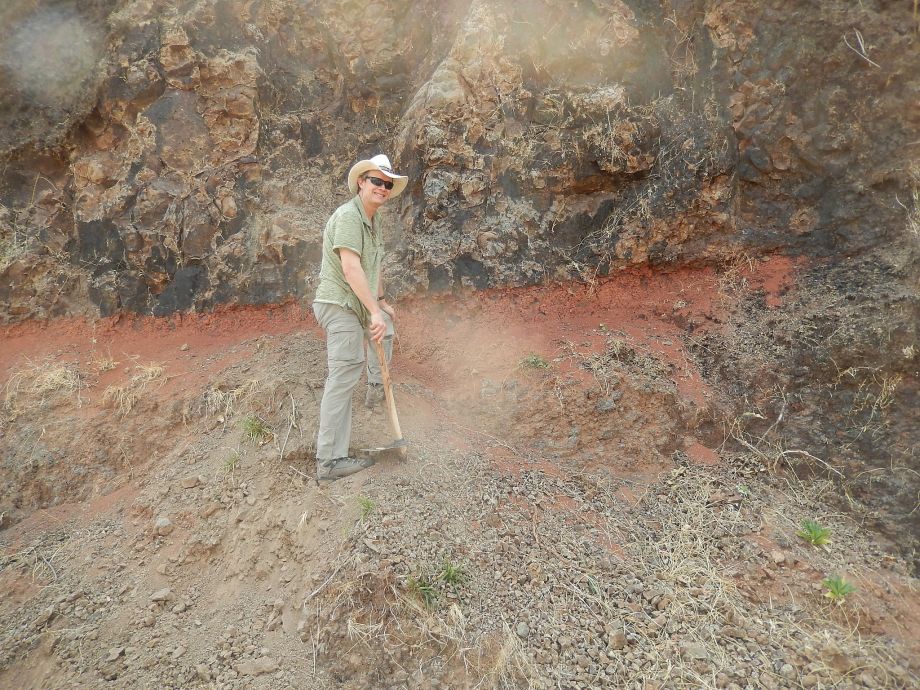-
Tips for becoming a good boxer - November 6, 2020
-
7 expert tips for making your hens night a memorable one - November 6, 2020
-
5 reasons to host your Christmas party on a cruise boat - November 6, 2020
-
What to do when you’re charged with a crime - November 6, 2020
-
Should you get one or multiple dogs? Here’s all you need to know - November 3, 2020
-
A Guide: How to Build Your Very Own Magic Mirror - February 14, 2019
-
Our Top Inspirational Baseball Stars - November 24, 2018
-
Five Tech Tools That Will Help You Turn Your Blog into a Business - November 24, 2018
-
How to Indulge on Vacation without Expanding Your Waist - November 9, 2018
-
5 Strategies for Businesses to Appeal to Today’s Increasingly Mobile-Crazed Customers - November 9, 2018
Volcanoes, asteroid wiped out dinosaurs
New research suggests that the asteroid or comet that slammed into the Earth 66 million years ago rocked the planet so violently that it accelerated a massive volcanic eruption in India, a double catastrophe that wiped out the dinosaurs and 70 percent of the Earth’s species.
Advertisement
The asteroid collision theory is well-known model that attributes the demise of the dinosaurs at the end of the Cretaceous period to a bolide impact, believed to have occurred roughly 66 million years ago.
The findings, based on the most accurate dates yet for the volcanic eruptions both before and after the asteroid impact, may help settle a long-standing debate about what caused one of the greatest mass extinction events of all time.
“The volcanism and the impact occurred within 50,000 years of the extinction, so it becomes somewhat artificial to distinguish them as killing mechanisms”, said Renne, director of the Berkeley Geochronology Center. Atmospheric effects are also hard to differentiate from each other as both events happened at the same time. “They clearly happened at the same time and both contributed”.
Researchers say that the double trouble of asteroid and extreme volcano eruptions would have blanketed Earth with dush, ash and toxic fumes, which not only reduced the inbound sunlight, but also caused about major climate change and ultimately spelled the doom on hundreds of thousands of animal and marine species.
An asteroid impact may have triggered huge earthquakes near the Deccan Traps that rattled the underground, magma-filled chambers and channels causing a shift from high-frequency, low volume eruptions to much more damaging low frequency, high volume eruptions, the scientists said.
The enhanced eruptions continued long after the dinosaurs died out, delaying the recovery of life for a few 500,000 years after the “KT boundary” – the point in time marking the end of the Cretaceous and start of the Tertiary period.
Gerta Keller, a Princeton geologist who has long championed the idea that the volcanism, and not the Chicxulub impact, led to the mass extinctions, said in an email that “there is still the big problem of demonstrating that this impact could have triggered the intense eruptions that led to the mass extinction”. The formation was created by a massive flow of lava. Citing this study, the Washington Post reported that initial eruption was not caused by the comet or asteroid though it could have intensified the event.
Such a change in the nature of eruptions – from frequent but small to occasional but enormous – could have been brought on by the shock of the asteroid impact, he said.
The researchers used a dating technique that placed the surge in eruptions no more than 50,000 years after the impact, a mere blink of the eye in geological terms.
Richards said that a large nearby natural disaster of a magnitude 8, 9 or 10 – as large or larger than the quake that struck Japan in 2011 – could also have reignited the Deccan Trap flows.
Several layers of volcanic rock were assessed through measurements dating for tracking the progress of Deccan Traps.
In the Science paper, they describe major changes in the Deccan Traps volcanism, which was probably “bubbling along happily, continuously and relatively slowly” before the extinction, Renne said.
Surprisingly, new analysis of the Deccan Traps lava flows show that volcanic activity actually slowed, but that each event released much more massive lava flows.
“That looks like a fundamental change in the plumbing system”, Renne said.
Advertisement
The evidence for the impact at that time comes from a worldwide layer of debris and the Chicxulub crater, which is buried under Mexico’s Yucatan peninsula.




























